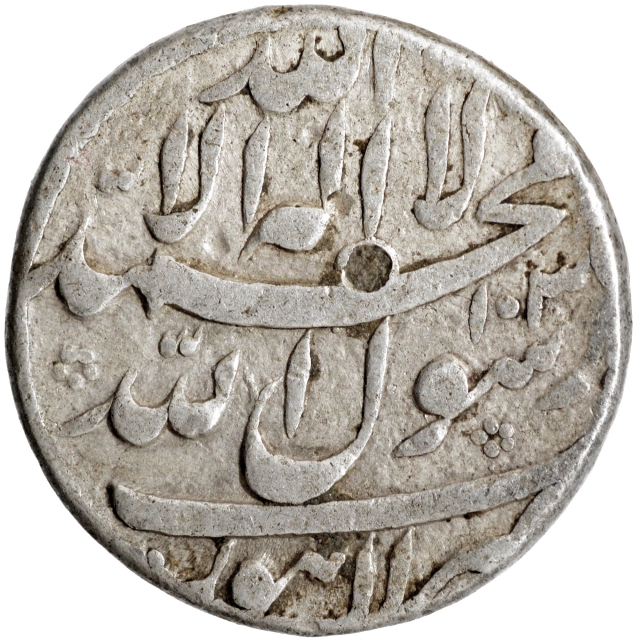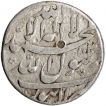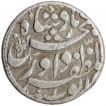This Lot is closed.
- P-Auction # 29
- Bids: 7
- Views:2163
| Start Price 1200000 | Estimated Price 1200000-1500000 |
| login, to view Hammer value | |
| Quick Description | ||||
|---|---|---|---|---|
| Denomination | Rupee 01 | Mint | Lahore | |
| Metal | Silver | RY (Ruling Year) | 1 | |
| Full Description: Dawar Bakhsh, Lahore Mint, Silver Rupee, AH 103X/1 RY, Obv: The Kalima Shahada with Hijri 103x & zarb Lahore, Rev: Abul Muzaffar Dawar Bakhsh Badshah with sana 1 regnal year, 11.3g, 21.5mm, (KM # 195.1), about extremely fine, one test mark on obverse, Exceptionally Rare. Dawar Bakhsh was born to Khusrau Mirza in the year 1607 AD, his name had a diving meaning that was “God Given”. He was married in the Royal family of Raja Jai Singh of Amber and ruled the great Mughal Empire for a short time between October 1627-January 1628 AD. Dawar was genealogically the grandson of Jahangir and the son of Khusrau, Khusrau was the eldest son of Jahangir. Jahangir affectionately named Dawar as Bulaqi which means “Nose-Ring”. Bulaqi was also named as Diwan of Deccan and later Governor of Gujarat by Jahangir. When Jahangir died on 28th Safar, A.H. 1037 in Kashmir, his powerful courtier Asaf Khan feared the Queen Nurjahan would place on the throne her favorite son Shahryar as the new king. He enthroned Sultan Bulaqi, the son of Jahangir's second son Khusrau, as 'Dawar Bakhsh'. The reign of Dawar Bakhsh was precipitated by clever politicking following the death of Jahangir. The mastermind behind this was Asaf Khan, who was the father-in-law of Shahjahan (the father of Mumtaz Mahal) and the brother of Nurjahan, the ambitious and machinating Empress of Jahangir who had virtually become the master of the Empire given Jahangir’s ill health and drug dependence. Asaf Khan, for his own good, favored Shahjahan’s succession to the throne but he was living the life of an exile faraway at Junnar in Deccan. Nurjahan’s animosity to Shahjahan was well-known. She instead favored Shahryar, Shahjahan’s half-brother, to succeed. She quickly alerted him to the death of the Jahangir. Shahryar hastened to Lahore, declared himself the king, took charge of the imperial treasury and set about to raise an army. In the meantime, Asaf Khan played two games – on one hand, he provided testimonials that Jahangir had nominated Sultan Bulaqi (whom Nurjahan’s had imprisoned) as his successor. He was released from confinement and was declared the Emperor at Bhimbar, soon after the death of Jahangir on 7th November 1627. A small investiture ceremony was held and the Khutba was read in his name. His imperial name was to be ‘Abu al-Muzaffar Dawar Bakhsh’. He was only 16 at this time. On the other hand, Asaf Khan secretly sent an envoy to Shahjahan to let him know his father had died, his moment had now arrived and he should quickly make his move to Agra, the imperial capital, to assume the reins of the Empire. Events gained pace after Jahangir’s funeral was held at Lahore on 12th November 1627. Shahryar, successful in raising an army with the cash from the imperial treasury he lavished on his supporters, confronted the retinue of Asaf Khan and Dawar Bakhsh, on their way back to Lahore. A battle ensued on 19th November 1627 in which Shahryar lost heavily. He was imprisoned and blinded by Asaf Khan’s partisans. A second, more lavish, the coronation was held for Dawar Bakhsh on 20th November 1627, with the Khutba being read in his name at Lahore. He was also additionally called ‘Sher Shah’ at this instance. Shahjahan received Asaf Khan’s courier on 27th November 1627 and quickly began his way to Agra from Junnar via Gujarat and Rajputana. En route, he assumed the royal titles and began sending imperial orders in his name. He gathered much support from various subject Princes and courtiers, who saw in him a more legitimate heir being the son of the deceased Emperor, than Dawar Bakhsh, who was a grandson and his father Khusrau had already fallen out of grace with Jahangir. On 19th December 1627, Shahjahan received the news of Asaf Khan’s victory over Shahryar at Lahore. He made a visit to the shrine of Muinuddin Chishti at Ajmer on 23rd January 1628. As Shahjahan approached Agra, Asaf Khan’s patience with Dawar Bakhsh at Lahore began to run out. On 2nd January 1628, while enjoying the hospitality of the Rana of Mewar, Shahjahan had already sent him a message to get rid of Dawar Bakhsh, through the hands of none other than the executioner who had beheaded Dawar Bakhsh’s father Khusrau. While all these machinations were going on, the teenager Dawar Bakhsh gladly played the role of being a sacrificial lamb for Shahjahan. He carried on acting as the Emperor and issuing edicts. When the messenger arrived at Lahore on 28th January, Asaf Khan promptly deposed Dawar Bakhsh. On 29th January 1628, the Khutba was read in Shahjahan’s name at Lahore. On 2nd February 1628, Dawar Bakhsh and Shahryar were both killed on Shahjahan’s orders along with four other princes who could be potential claimants to the throne. Thus ended Dawar Bakhsh’s reign, lasting only for 72 days. On 14th February 1628, Shahjahan formally held his coronation at Agra. The Khutba was once again read in his name, this time at Agra. Reference to Historical Incidents is from the excerpts S. Bhandare & J. Lingen. This coin has the date numeral, the RY on this coin is clearly inscribed as 1 and not 'Ahad'. This variation is being noticed rarely in the coins of Dawar Bakhsh and this rupee is hitherto unique in this respect. As the usual practice was to indicate the RY in this fashion only before the king's official coronation, this coin must have been struck in the period of about 10-12 days, between the enthronement of Dawar Bakhsh at Bhimbar soon after 8th November 1627, and his official coronation which took place at Lahore on 20th November 1627. The fact that 'Khutba' was read in his name in both instances leaves room for the fact that coins might have been struck too. It also indicates that at some point of time in this very short lapse, Dawar Bakhsh must have had some partisans in Lahore, even when Shahryar had taken charge there and assumed royal titles for himself. This could well be regarded as the 'pre-coronation' coin of Dawar Bakhsh. A pleasing example, with the entire text fully visible with only one test mark, evens the BM and the KM illustrated specimens have test marks. Hull notes only 4 known examples of this ruler but today less than 10 survive. | ||||


